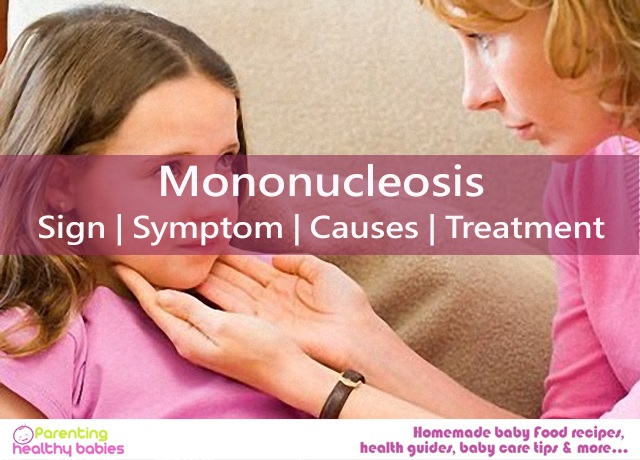As we all know, today’s lifestyle we lead is unhealthy. Pollution being the major cause and the air pollution is one of the main types of pollution causing damage to so many vital organs of our body.
But some diseases may also occur due to inheritance. Cystic Fibrosis is one of those diseases. The symptoms are easily visible. Sometimes, there are few more causes other than inheritance. Treatment is employed to ease symptoms and reduce complications. It depends on the severity of the disease.
Read More: Cirrhosis of the Liver in Children: Symptoms, Causes and Treatments
All You Need to Know About Cystic Fibrosis
What is Cystic Fibrosis?
Disease which is being characterized by buildup of thick and sticky mucus causing damage to the various body organs. It affects the lungs, digestive system, sinuses and sex organs.
There occurs mutation on chromosome no. 7 carrying cystic fibrosis (CF) gene which encodes a protein named CFTR (Cystic Fibrosis Transmembrane Regulator). The abnormal CFTR protein in CF patients lead to disruption of chloride channels on the cells.
Every individual inherits 2 CFTR genes each from one parent. Being autosomal recessive disease it occurs only when the child inherit faulty CFTR gene from both the parents. And the child with single faulty gene could act as a “carrier” showing no symptoms of cystic fibrosis but may pass on to the next generation.
CF is characterized by production of excessive abnormal mucus which often blocks the lungs and airways leading to repeated serious lung infections. This mucus can also block tubes or ducts in the pancreas due to which digestive enzyme cannot reach the small intestine causing impaired absorption of fats and protiens. This may lead to vitamin deficiency and malnutrition.
Mucus is slippery substance which helps in lubrication and protection of the lining of the airways, digestive system, reproductive system and other organs. The mucus clogs and lead to bacterial infections causing wheezing, coughing and inflammation.
Read More: 11 Diseases You Never Heard of Till you had a Baby
Symptoms of Cystic Fibrosis
Awareness about the signs and symptoms of Cystic Fibrosis is important to know. These depend on the severity of the disease. Moreover these symptoms may not be seen in adolescence or adulthood. People suffering from it may have higher level of salt in their sweat. Most common symptoms are seen affecting the respiratory system and digestive system. But an adult may show atypical symptoms such as recurring bouts of inflamed pancreas, infertility and recurring pneumonia.
Respiratory system shows following signs and symptoms
- Persistent cough with thick mucus
- Breathlessness
- Repeated lung infections
- Wheezing
- Exercise intolerance
- Stuffy nose
Digestive system shows following signs and symptoms
The thick mucus often blocks the ducts carry digestive enzymes from pancreas to small intestine leading to malabsorption of the nutrients present in food which results:
- Intestinal Blockage mainly seen in neonates.
- Poor weight gain and growth.
- Foul smelling , greasy stools
- Severe constipation.
- Nausea
- Loss of appetite
Sometimes passing stool requires strain and this strain may cause protrusion of part of the rectum outside the anus. This is often seen as a sign in children suffering from cystic fibrosis. Consultation of doctor becomes mandatory in this case. Children with rectal prolapse require surgery sometimes.
Read More: Prenatal Testing: Normal Ranges for Various Tests
Causes of Cystic Fibrosis
In Cystic Fibrosis, the defective gene, CFTR gene now cannot regulate the normal function i.e. the in and out movement of salt and water in the cells of the body. This makes the mucus thick and sticky and keeps building up in various parts of body including liver, lungs, pancreas and intestine.
Risk Factors
Family History: as it is an inherited disorder, it runs in the families.
Race: It may occur in all kind of races but white people are more prone to it.
Treatment for Cystic Firbrosis
Cystic Fibrosis is uncurable but to ease the symptoms certain treatment are employed, reducing the signs of complications. Early detection and intervention is recommended.
The goals of treatment include:
- Removal and loosening of mucus from the lungs.
- Preventing and controlling infections that occur in the lungs.
- Treating and preventing intestinal blockage.
- Providing adequate nutrition.
Medications
- Antibiotics are given to treat and prevent lung infection.
- For reducing the swelling in airways in your lungs anti inflammatory medications are lessen.
- Mucus thinning drugs help in coughing up the mucus improving the lung function.
- Bronchodilators used to relax the bronchial muscles.
- Oral pancreatic enzymes help in absorption nutrient in digestive tract.
Chest Physical Therapy
It is done by loosening the thick mucus in the lungs making the coughing process easy. This chest therapy helps loosen mucus. It has to be performed one to four times a day. The common technique is clapping with cupped hands in front and back of the chest. Breathing techniques have also been employed to loosen the mucus.
Vest Therapy
Some mechanical devices have been used to loosen lung mucus which includes vibrating vest or tube.
Pulmonary Rehabilitation
Sometimes doctors may recommend long term program that may improve functioning of lungs. Pulmonary rehabilitation is done which includes
- Physical exercise improving the condition
- Breathing Techniques for loosening the mucus
- Counselling and support
- Nutritional Counselling
Surgical and other procedures
- Oxygen therapy: The doctor advices to breath pure oxygen to prevent high blood pressure in lungs if the oxygen level in blood declines.
- Bowel surgery: As in cystic fibrosis the thick and sticky mucus blocks the digestive system ducts so anyhow if the bowel is blocked then surgery is required to remove it.
- Nasal poly removal: Nasal poly obstructs breathing so its removal is suggested by doctor.
- Endoscopy and lavage: The thick and sticky mucus is cleared from airways through an endoscope.
- Lung transplant: This is an option if someone has severe breathing problems and life-threatening complications of lungs.
Cystic fibrosis does not reoccur if the lungs are transplanted. But the other problems related with cystic fibrosis such as – digestive system problems, sinus infections and diabetes can still occur after a lung transplant.
Read More: Health Benefits of Papaya for Babies
Cystic fibrosis diet
For a healthy diet, proper amount of calories, vitamins and minerals should be added. Patient with complaint of cystic fibrosis should have high intake of calories and fat.
Following are the important contents to be added in the diet:
Fat: An important source of calories. Fat contains about 9 calories per gram unlike proteins and carbohydrates containing only 4 calories per gram. Easy way of adding fat in the diet can include as such, topping an omelet with avocado and nuts to every salad.
Salt: Since, in CF the cells producing sweat are also affected, the extra intake of salt should be added in patient’s diet. This can be done by choosing the salty snacks such as chips, pickles and salted nuts.
Calcium: Maintenance of bone content is essential therefore the patient need high calcium level diet including dairy products such as milk, yoghurt and cheese.
Fruits and Vegetables: Vitamins and minerals add upon the important healthy diet of the patient with cystic fibrosis.
Food rich in fat soluble vitamin D, A and K: These vitamins help in increase the absorption of calcium and increasing the bone density.
Conclusion
An active life can be led by people suffering from cystic fibrosis if managed properly. But sometimes serious complications such as liver disease and diabetes may occur. Cure of the disease is not available yet as it is a genetic disorder but the treatment is possible for reducing and stopping the complications of cystic fibrosis.













